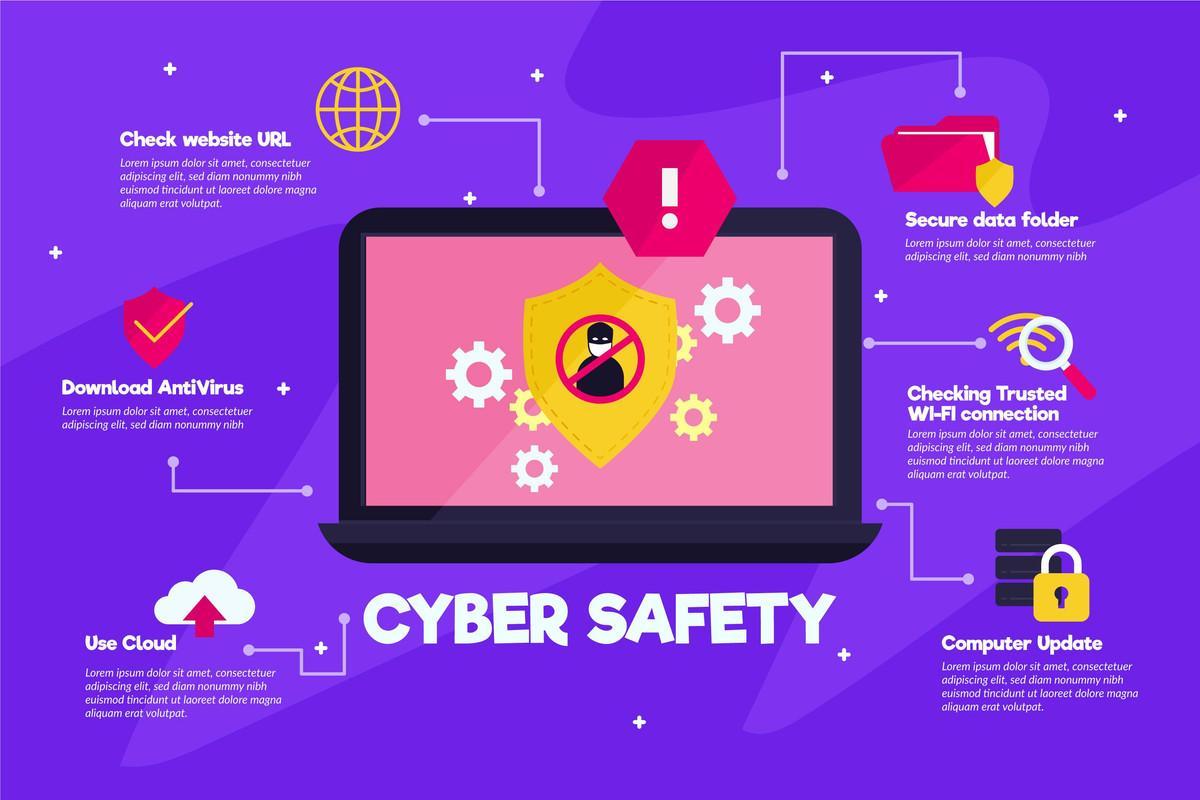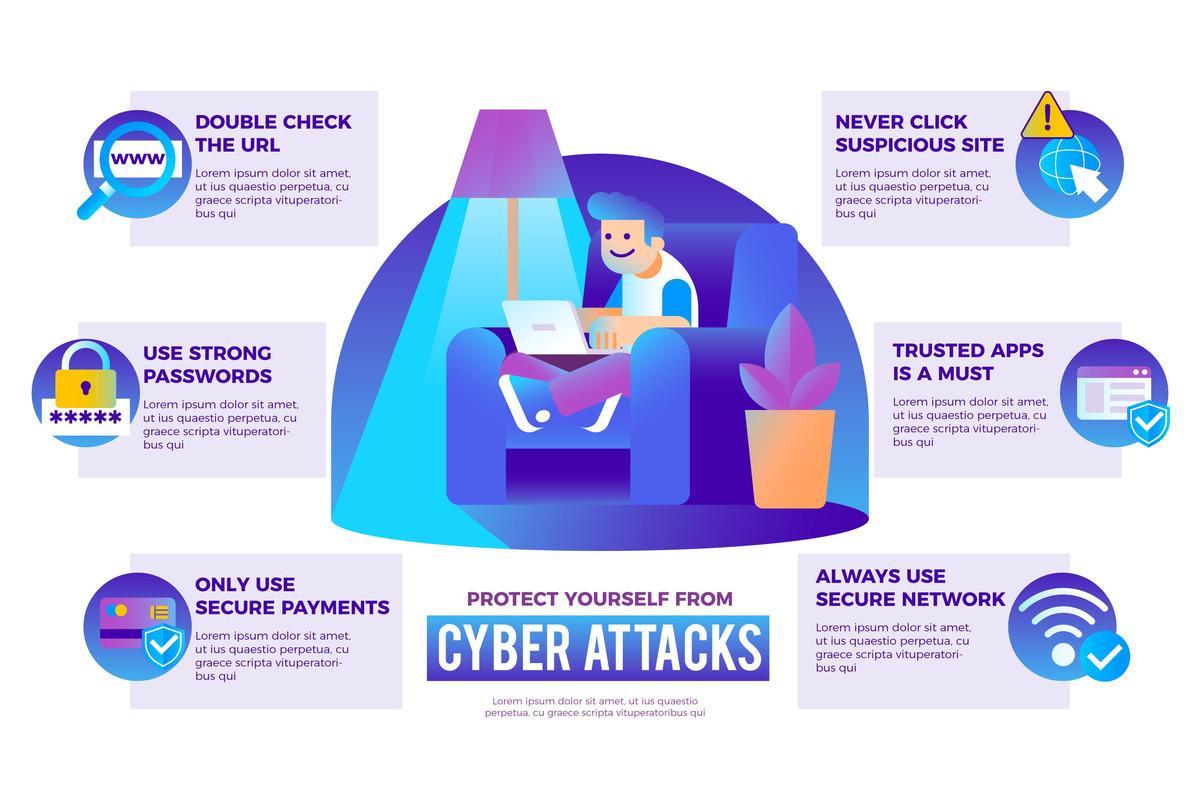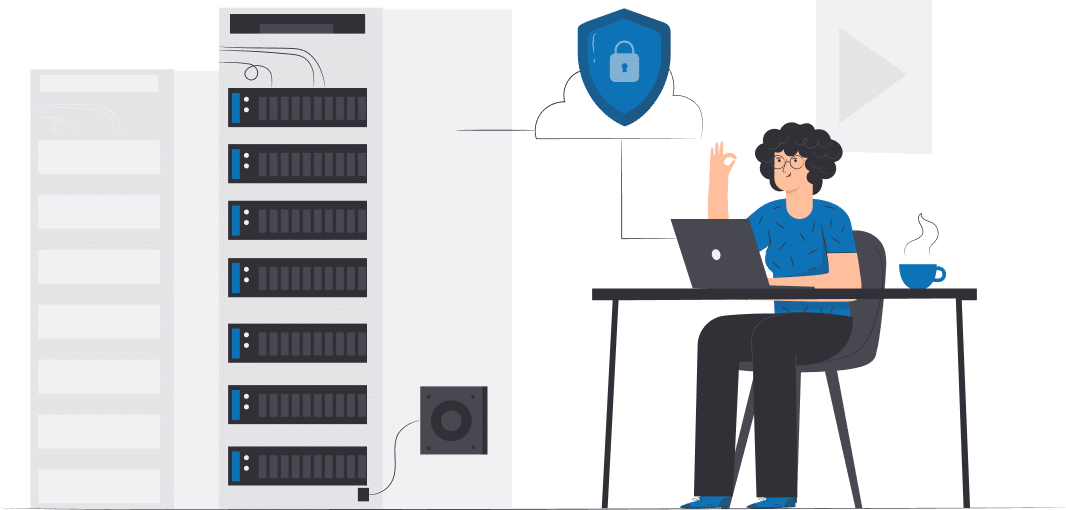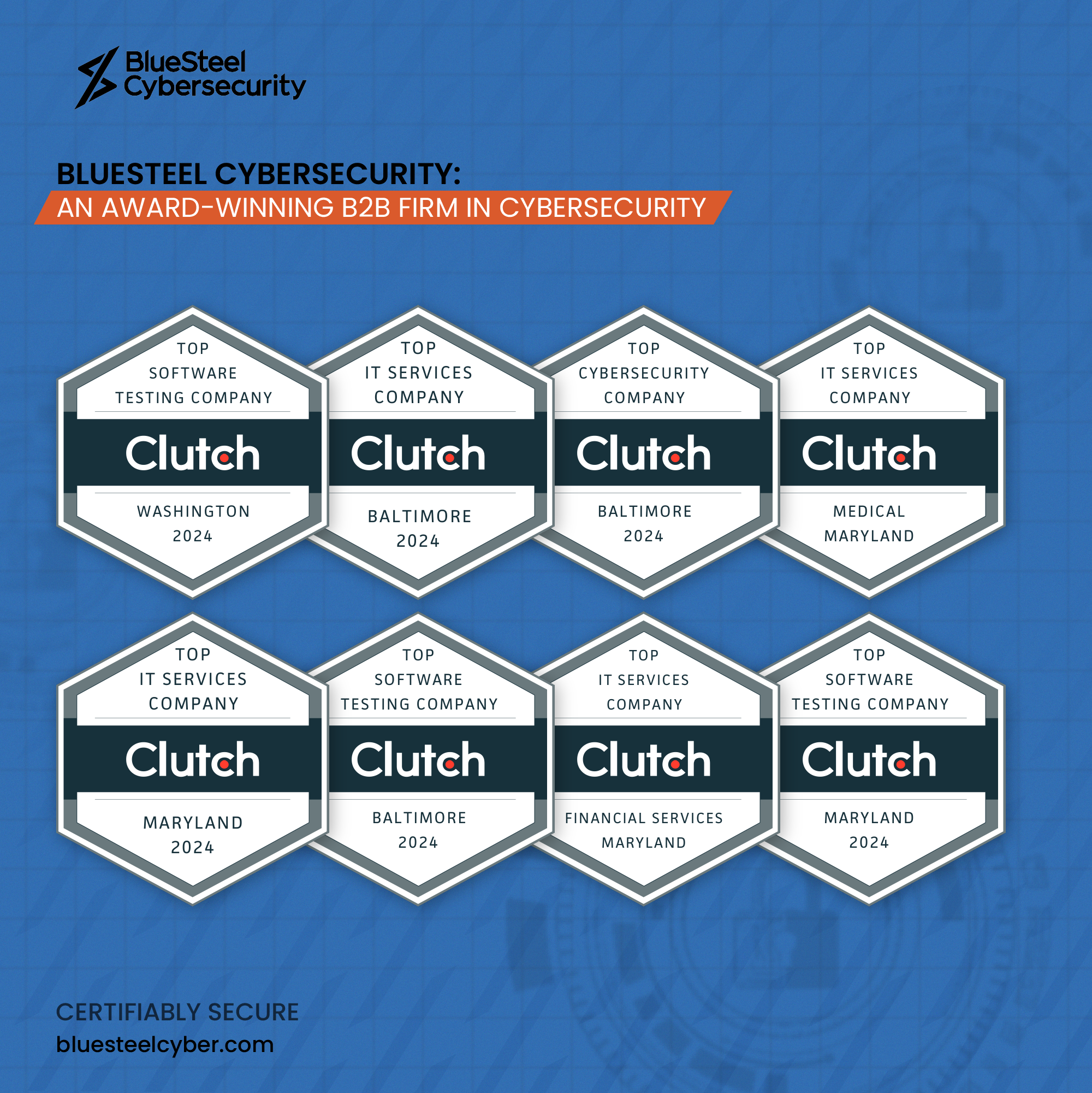In today’s paced era, businesses of all sizes face a significant threat from cybersecurity breaches. As companies increasingly rely on technology for operations and the storage of information, they become more susceptible to malicious cyber-attacks with potentially disastrous consequences. A single instance of a data breach can result in losses for a company, including expenses incurred during recovery efforts, legal fees, and irreparable harm to their reputation.
This is why organizations cannot afford to overlook the importance of having a cybersecurity strategy in place—it has become an absolute necessity. However, developing and implementing security measures requires knowledge and resources that many companies find themselves lacking. That’s where partnering with a provider of cybersecurity services becomes imperative.
In this comprehensive guide, we will discuss the many ways an experienced cybersecurity company can help your business bolster its defenses against cyber threats. We’ll explore the most common risks facing today’s corporations and explain why hiring security professionals is essential to mitigating those risks.
You’ll learn the benefits of working with a dedicated cybersecurity team, from thwarting data breaches to instituting best practices that ensure compliance and data protection. We’ll also provide tips on choosing the right partner for your organization’s needs and review the solutions today’s top cybersecurity firms offer. With the insights in this guide, you’ll be equipped to make smart decisions when selecting a cybersecurity company that will become an invaluable ally in future-proofing your business and allowing it to thrive securely.
Table of Contents
The Most Critical Risks Facing Today’s Businesses
In our interconnected world, companies of all sizes face a growing number of risks that can impact their operations, bottom line, and reputation. While traditional risks like market fluctuations, supply chain disruptions, and compliance failures remain top concerns, cyber threats have emerged as one of the most critical risks for modern businesses.
Unlike other risks, cyber attacks can strike suddenly, cause immense financial damage within hours, and cripple entire systems necessary for daily functions. And as criminals become more sophisticated and businesses become more technology-dependent, the target market for their digital assets only increases. Just look at the numbers: 60% of small businesses fold within six months of a cyberattack. And the average cost of a data breach now exceeds $4 million.
These alarming statistics demonstrate why cybersecurity can no longer be an afterthought for organizations. It must be an integral part of any risk mitigation strategy. But what exactly are the cyber risks that businesses need to safeguard against? Here are some of the most common and damaging:
1. Data breaches
The unauthorized access and theft of sensitive company or customer information. A breach can lead to loss of intellectual property, financial fraud, compliance violations, and permanent reputational damage.
2. Phishing attacks
Fraudulent emails or websites dupe employees into handing over passwords and other credentials that provide backend access to systems. A single clicked link can unleash malware deep into networks.
3. Ransomware
Malicious software that locks systems and encrypts data until a ransom is paid. This can result in days or weeks of downtime and lost revenue.
4. Insider threats
Employees or contractors intentionally exceed authorized access to systems and data to steal or damage assets. Insider threats also include accidental insider risks, like falling for phishing schemes.
5. Distributed denial-of-service (DDoS) attacks
These are attempts to overwhelm systems with junk traffic that render networks or applications inaccessible to legitimate users. These types of attacks can result in costly outages.
6. Third-party risks
Third-party risks are those that external vendors, suppliers, partners, and their access introduce into environments. A breach by a third party can be just as damaging.
7. Compliance failures
Violations of industry regulations like HIPAA healthcare rules or PCI-DSS financial transaction standards. Non-compliance leads to steep fines, lawsuits, and loss of customer trust.
8. Unpatched software
Running outdated operating systems, applications, and devices with security flaws that have not been updated to the latest patches. This leaves organizations easily exploitable by cybercriminals.
While this list is formidable, the good news is that businesses can take steps to significantly reduce their exposure to these cyber risks. As we’ll explore next, partnering with an experienced cybersecurity services provider is one of the most effective ways to secure critical assets and ensure resilience against attacks.
Why Every Business Needs a Trusted Cybersecurity Partner
As the number of cyber threats continues to grow, it has become crucial for organizations to have protection against attacks in order to survive and succeed. However, for businesses, it is not always feasible to establish a security team equipped with the latest tools and expertise to defend against these threats. Cybersecurity talent is hard to find, expensive, and often available to enterprises with substantial budgets.
That’s why partnering with a managed security services provider (MSSP) has become a popular solution for modern organizations. An MSSP is a cybersecurity company that offers a range of services to manage, monitor, and enhance clients’ security posture over time. Essentially, anyone can employ a MSSP and gain access to a security team without having to start from scratch.
Here are some of the key benefits of working with a trusted cybersecurity company as a service partner:
1. Reduced Risk of Data Breaches and Attacks
A reputable cybersecurity company employs highly skilled professionals whose sole focus is protecting client environments from intrusion. Leveraging threat intelligence, advanced tools, and defensive techniques vastly improves security and reduces exploitable holes. According to the Deloitte Cybersecurity Threat Trends Report 2023, companies partnering with MSSPs experience 60% fewer breaches than those who don’t outsource security.
2. Cost-Effective Security Management
Hiring a full in-house security team requires a significant capital outlay for competitive salaries, top security tools, ongoing training, and building an internal SOC. Partnering with an MSSP provides all the expertise, technology, and resources you need in a scalable, pay-as-you-go model that converts hefty fixed costs into flexible operating expenses.
3. Always Up-to-Date Security
Cyber threats evolve at breakneck speed, and attack methods that work today are useless tomorrow. Keeping defenses updated against new threats requires time and focus most businesses can’t devote. Outsourcing to security specialists ensures your systems are always protected with the latest protocols and intelligence.
4. Proactive Threat Identification
A managed security partner proactively hunts for risks and anomalies in client networks using threat intelligence feeds, log analysis, and other threat detection tools that an average organization does not have access to. Potential issues are flagged before they become a full-blown crisis.
5. Meeting Compliance Obligations
Industry and government regulations related to data security, privacy, and IT governance continue to expand. Violations result in heavy penalties and lawsuits. Partnering with cybersecurity experts who stay current on all compliance mandates helps avoid these outcomes through built-in controls.
6. Peace of Mind
Knowing an expert team is vigilantly monitoring networks, keeping defenses adapted to the threat landscape, and responding to incidents removes a heavy burden from organizations. It allows them to focus on core functions with confidence instead of dreading the next attack.
In essence, outsourcing cybersecurity to skilled specialists frees up time, money, and peace of mind for organizations while providing vastly superior protection. For budget-constrained small businesses, partnering with an MSSP may be the only way robust security and compliance are achievable. For larger enterprises, MSSPs fill resource gaps and provide overlapping security to reinforce in-house teams.
The bottom line is that going it alone in cybersecurity today is extremely risky. Having trusted professionals dedicated to protecting infrastructure 24/7 has become an indispensable investment rather than an optional expense. We’ll cover more specifics on the types of solutions a managed security services provider can deliver to fortify defenses in the sections below.
Choosing the Right Cybersecurity Partner: An Essential Decision
Choosing the provider for managed security services is a decision for any organization. This partner will be responsible for safeguarding your assets and sensitive information on a day-to-day basis. Making the wrong choice can leave you exposed to risks.
To ensure that you find an MSSP that truly aligns with your team, it’s crucial to approach the evaluation process thoroughly. Here are some best practices to follow when researching partners;
1. Prepare a Request for Proposal (RFP)
Create a document outlining your organization’s security requirements, priorities, budget limitations, compliance needs, and any unique infrastructure considerations. Share this RFP with all candidates so they can provide tailored responses based on your needs.
2. Vet Qualifications Extensively
Validate all credentials and claims made by the provider. How long have they been in business? What are their areas of specialty? Do they have recognized industry certifications like ISO 27001 compliance? Are staff vetted and background checked? Get granular proof.
3. Request Client References
Reputable cybersecurity companies will be eager to connect you with current clients who can speak to service levels and proven security outcomes. These references are invaluable data points. Ask about responsiveness, communication, and customization.
4. Interview Key Personnel
The competency of the actual technicians who will manage your account daily is critical. Interview any management, engineers, and analysts that will be assigned to you. Assess their technical expertise, communication skills, and problem-solving approach.
5. Review Tools and Technology
Ask providers to demonstrate the specific security solutions and platforms used to deliver managed services. Assess whether they are industry-leading tools that align with your stack and needs. Modern platforms are a must.
6. Clearly Understand Services Offered
Dig into details of the provider’s core service packages, add-ons, implementation plans, response protocols, reporting dashboards, training options, support channels, and customization abilities. Leave no stone unturned.
7. Compare Service Level Agreements
SLAs outline measurable benchmarks like maximum response time to incidents, uptime guarantees, and escalation protocols. Analyze these closely to ensure the partner can contractually meet your needs and expectations.
8. Request a Risk Assessment
Many Managed Security Service Providers (MSSPs) offer assessments of your infrastructure and vulnerabilities as part of their business bidding process. These assessments provide insights into the existing security gaps. How the provider would address them if selected.
It is essential to invest time in conducting due diligence upfront. Cutting corners on these steps often results in partnering with providers who may not be a fit or lack the skills to provide robust protection. It is important not to settle for promises and flashy marketing. The ideal provider should demonstrate real-world expertise that is tailored to your environment and risk profile.
In the sections, we will delve into the attributes and offerings that you should look for during the vetting process. This way, you can choose a cybersecurity partner that perfectly meets your needs.
Making a Worthwhile Investment in Managed Cyber Security Services
Many small and mid-sized businesses may initially balk at the costs associated with partnering with a managed security services provider and view it as an unnecessary expense. However, the economics of robust cybersecurity protections are far more favorable than most owners realize. When weighed against the astronomical costs your business faces from a successful breach or attack, MSSP fees are very reasonable for the protection gained.
Most MSSPs offer packaged monthly subscriptions based on the number of IT assets and devices to be monitored and managed. Entry-level plans typically start in the few hundred dollar range. Mid-market plans span from $1,000 to $5,000 based on additional services and features selected. For context, the average cyber attack costs a small business $200,000, according to recent data. Just one avoided breach can recoup years of MSSP fees in cost savings.
The monthly subscription model also provides predictable costs and converts heavy capital security expenses into flexible operating expenses. There are no massive upfront investments needed in infrastructure and software. Everything is provided and adapted as needed through the partnership.
For most organizations, the decision to invest in around-the-clock monitoring and defense from seasoned security experts is a simple risk-and-reward proposition. Proper cybersecurity is no longer a “nice to have” – it’s an essential component for avoiding business catastrophes.
Critical Questions to Ask Prospective Cybersecurity Partners
The vendor evaluation process offers a valuable opportunity to pose in-depth questions and gain insights into how potential cybersecurity partners operate, their strengths and limitations, and how well they can address your needs. Don’t squander this chance to go beyond sales pitches and marketing gloss.
Here are some of the most important questions to ask:
- What is your experience serving companies in my specific industry and with my type of infrastructure? Relevant experience matters more than general capability.
- How quickly have you responded to incidents and breaches for other clients? Ask for real examples. Speed is critical.
- What metrics and KPIs do you track and report to demonstrate improved security posture? Are they customizable? Visibility is key.
- What proactive services like pen testing and vulnerability scans do you provide? The most effective firms go beyond just monitoring.
- Do you offer security awareness training for my staff? Human-driven risks require education.
- What threat intelligence feeds do you leverage? Sophisticated intel is foundational to proactive defense.
- How often are tools and techniques updated? The threat landscape evolves rapidly. Stagnant defenses get breached.
- Will my account have a dedicated team or a single point of contact? Consistency and familiarity are invaluable.
- How much can services and monitoring be customized to my needs? One-size-fits-all protection is inadequate.
- What is your client satisfaction rate? Ask for measurable metrics and specific examples.
- How will you help meet my regulatory compliance requirements? This should be a core competency.
- Where are my data and assets stored? On-premise infrastructure is riskier than cloud-based.
- What insurance policies cover costs in a breach scenario? Liability caps matter.
Do not hesitate to ask frequent, detailed questions. Transparent providers will embrace the opportunity to demonstrate expertise and build trust. The insights you glean are invaluable for making the right selection.Schedule an Assessment.
Core Services Provided by Managed Security Partners
Cybersecurity encompasses a vast range of solutions and capabilities needed to protect modern digital environments. While specific services offered by providers vary, most MSSPs deliver a subset of core functionality:
Perimeter Defense
Firewall management, intrusion prevention, vulnerability scanning, and perimeter monitoring to protect network boundaries.
Endpoint Security
Hardening endpoints via patch management, anti-malware, whitelisting, and agent-based protections for devices.
Cloud Security
Securing cloud infrastructure, workloads, data, and applications via ongoing configuration checks, access controls, encryption, etc.
Security Operations Center (SOC)
24/7 alert monitoring, investigation and response by a dedicated SOC team of security analysts.
Log Analysis & SIEM
Collection and correlation of audit logs from across environments to identify risk trends and enable fast incident response.
Compliance Services
Ensuring compliant data protection, access controls, audit logs and documentation for standards like PCI DSS, HIPAA, GLBA, SOX and more.
Security Awareness Training
Ongoing education to teach staff secure practices and how to avoid human-driven breaches.
Incident Response
Expert investigation, containment, remediation, and recovery services if a breach does occur to minimize damage.
While this represents a cross-section of must-have capabilities, leading MSSPs go beyond the basics to provide more advanced functionality like threat hunting, deception technology, DDoS mitigation, insider threat detection, cyber threat intelligence, and customized consulting. The ideal partner offers comprehensive services aligned to your specific technical and regulatory obligations.
Why Proper Cybersecurity is Non-Negotiable for Businesses
Given the extreme risks posed by cyber threats, maintaining rigorous security defenses is no longer optional for any organization that values its operational resilience, reputation, and financial viability. The benefits of solid cybersecurity practices are numerous and impact wide swaths of the business:
1. Greatly Reduced Risk of Attacks
First and foremost, proper cybersecurity controls greatly reduce the risk of attacks that lead to costly outages, stolen data, legal liabilities, fines and permanent reputational damage. By implementing layered protections like firewalls, endpoint security, access controls, staff training, and threat monitoring, companies create barriers that make the organization a far less appealing and much harder target for cybercriminals to successfully breach. Statistics show companies with mature security programs experience 60-70% fewer incidents than those with inadequate defenses. Avoiding just one major breach can save untold costs in recovery, legal fees, and reputational harm.
2. Peace of Mind
Knowing Data is Secure With robust cybersecurity in place, leadership can rest easier knowing critical systems and sensitive data are vigilantly protected 24/7/365. Confidence replaces nagging doubts and stresses over vulnerabilities that let them down. Employees can focus fully on their work without worrying whether the next click will trigger an infection. There’s comfort in knowing your organization’s “digital house” is secured and threat actors are kept at bay.

3. Compliance Requirements Are Met
Proper cybersecurity practices enable organizations to meet the plethora of legal and regulatory compliance requirements related to privacy, security controls, and breach notification laws. Frameworks like HIPAA in healthcare, PCI-DSS in retail, Gramm-Leach-Bliley in finance, and many state-level breach laws dictate specific security obligations companies must satisfy. The penalties and sanctions for non-compliance can be severe, including heavy fines that quickly reach millions of dollars. However, with continuous security controls, auditing, and documentation, these mandates become simple to fulfill.
4. Customer and Partner Confidence
Inspiring trust and confidence in customers, partners, and employees that their sensitive information is properly safeguarded is another benefit of cybersecurity maturity. Customers today demand assurance their data is handled securely before engaging with a business. Cybersecurity thus acts as a strategic competitive differentiator. Partners also seek out firms with solid security to reduce their own risk exposure.
5. Focus on Core Business
Safely Embrace New Technologies Another benefit is safely embracing exciting technologies like cloud, mobile access, and Internet of Things (IoT) that drive new efficiencies but also increase risk surfaces. With the expertise of cybersecurity teams, these innovations can be adopted rapidly under secure architectures. Without security involvement, these promising technologies simply become new threat vectors.
6. Competitive Advantage
Finally, proper cybersecurity positions the organization competitively as secure and resilient when vying for new customers and opportunities. Prospects today often ask about security posture during their vetting process. Being able to showcase maturity and certifications provides a leg up over less prepared competitors. Security drives revenue.
In short, cybersecurity allows companies to reduce liability, fulfill duties to stakeholders, open new revenue streams, attract talent, and operate with confidence in turbulent times. It is an investment that easily provides many times over any associated costs.
The Dangers of Insufficient Cybersecurity Investment
Despite widespread awareness of intensifying cyber risks, many organizations still gravely underinvest in protecting critical systems and data. The consequences of lackadaisical security can be severe and wide-ranging:
1. Guaranteed Data Breaches
First and foremost, insufficient controls make data breaches a matter of “when”, not “if”. Without vigilant monitoring, robust access controls, and layered technical protections, threat actors can infiltrate networks and exfiltrate sensitive customer data, intellectual property, and financial information with relative ease. Breaches become inevitable events rather than unlikely possibilities. According to 2022 Verizon research, 85% of breaches involve a human element highlighting how poor internal security practices lead to incidents.
2. Expensive Recovery Efforts
Another danger is protracted and expensive recovery efforts after successful attacks. Extensive costs arise from hiring forensic investigators, repairing compromised systems, conducting damage assessments, and potentially informing customers and authorities when data is impacted. These diverted resources drain budgets quickly. According to IBM, the average cost of a data breach now exceeds $4 million. Recovery also requires teams to shift away from business-critical activities, resulting in lost productivity and opportunities.
3. Regulatory Fines and Legal Action
Lack of security also exposes organizations to steep fines for violating compliance frameworks like HIPAA and PCI-DSS which require adequate controls. Non-compliance fines can easily reach millions. Class action lawsuits from impacted individuals are also increasingly common following breaches, resulting in heavy legal expenses and settlements. Both regulators and the public are cracking down hard on lax security.
4. Reputational Damage
Insufficient security also causes permanent reputational damage and loss of customer trust that destroys brand value built over many years. Customers today have little tolerance for breaches caused by poor controls. Many customers lose trust in a brand after a breach and a large portion completely disengage. This causes a ripple effect as negative publicity spreads. Many organizations never fully recover their standing and lose business.
5. Repeat Attacks
Poor security also triggers repeat attacks, as threat actors return frequently to organizations once weaknesses are exposed. Adversaries know these companies remain ill-prepared to stop new attacks. Lack of adequate investment signals easy prey.
6. Hinders Technology Adoption
Insufficient security practice also hinders the adoption of potentially beneficial technologies like the Internet of Things (IoT), cloud computing, mobility, and big data analytics. These emerging innovations rely on robust security foundations as integral components. Building them upon weak legacy environments is akin to constructing skyscrapers on sand. The business risks prohibit many companies from reaping their efficiency benefits.
7. Loss of Competitive Advantage
Finally, poor security causes a loss of competitive advantage compared to rivals who proactively embrace cybersecurity maturity. With threats top of mind for customers, business partners, and prospects, organizations now promote their security posture as a differentiator. This allows them to win over customers, talent, and opportunities. Companies perceived as higher risk struggle to compete.
In essence, skimping on security investments sets organizations up for failure. They become sitting ducks unable to withstand the cyber threat climate. Prudent investment commensurate with risks and vulnerabilities is the only viable path forward in the digital age.
The Far-Reaching Impacts of Poor Cybersecurity
The consequences of insufficient cybersecurity extend well beyond immediate damages from data breaches and outages. Poor security posture also hinders operational capabilities, revenue, and competitiveness of businesses in a myriad of ways:
1. Distracted Leadership
Business leaders spend an inordinate amount of time reacting to security incidents rather than focusing outward on delivering innovation, exceeding customer expectations, and driving growth. The technical team also gets stuck in constant firefighting mode to contain breaches rather than pursuing productive development projects and new initiatives. The business loses forward momentum.
2. Drained IT Resources
The technology team faces continuous demands for patching and recovery efforts after attacks and outages related to vulnerabilities. As a result, there is little bandwidth left for constructive work on digital transformation, cloud migrations, customer experience improvements, and other key initiatives needed to keep the company competitive. Innovation suffers at the hands of security neglect.
3. Deterrence From New Technologies
Pervasive security gaps also deter the adoption of new technologies that could provide tremendous efficiencies but also introduce risks, like cloud-based systems, the Internet of Things, mobility platforms, and big data analytics. Business and technical leaders hesitate to build these solutions in vulnerable legacy environments. Opportunities are missed as competitors press forward.
4. Loss of Customer Trust
Breaches caused by poor security lead to eroded customer trust, loss of sales, terminated accounts, and benefits to better-protected competitors. After incidents, customers question whether the organization can safeguard their information and interact securely. This causes them to disengage and take their business elsewhere at the first opportunity.
5. Talent Acquisition Struggles
Attracting and retaining top talent also becomes challenging, as employees desire to work for organizations with security maturity rather than lax practices that continuously put their personal data at risk. According to research, a large number of IT professionals consider an employer’s security posture before joining, and many opt not to join organizations with reputations for poor security.
6. Increased Insurance Costs
When insurers identify unmanaged cyber risks, organizations struggle to obtain reasonable cyber insurance policies. Coverage options narrow and premiums spike, if coverage can be obtained at all. Weak security posture renders many businesses essentially “uninsurable” for cyber incidents. This leaves them exposed to full liability.
7. Access to Capital
Diminished Capital fundraising and securing attractive lines of credit also become more difficult when financial institutions and investors identify unmanaged cybersecurity risks. They hesitate to invest in companies unless proper controls are in place to protect assets and data. Security maturity is a prerequisite for capital in many cases.
8. Lower Acquisition Valuations
Likewise, organizations with weak security often hold less appeal as acquisition or investment targets. Buyers don’t want to inherit vulnerabilities and liabilities. This causes the valuations of these entities to suffer. Their security gaps significantly dampen opportunities relative to secure organizations.
In summary, the downstream effects of cybersecurity neglect accumulate into a tidal wave over time that greatly hinders competitiveness on multiple fronts. Urgent attention is required to shore up defenses and steer the organization back on course. Cybersecurity can no longer be brushed aside as just an IT issue – it demands executive-level focus as a business-critical priority.
Steps to Dramatically Improve Cybersecurity Posture

For organizations with security gaps, taking decisive action is critical. Major improvements are achievable by taking these key steps:
– Conduct exhaustive risk assessments and audits to identify sensitive data, vulnerabilities, and highest-priority security needs unique to your systems and processes.
– Terminate the use of outdated technology and ensure hardware and software are kept continuously updated with the latest security patches.
– Implement robust, layered defenses at network perimeters, email gateways, endpoints, and cloud applications to protect against attacks. Leverage platforms designed specifically for detection and response.
– Provide frequent security awareness training to employees to change behaviors that often lead to breaches. Include simulations that test reactions to phishing and other social engineering techniques.
– Adopt strong access controls, multi-factor authentication, encryption and usage policies to safeguard data and limit damage from compromised credentials.
– Ensure compliant data privacy and security controls are in place to pass audits for industry and government regulations. Commit resources to sustaining compliance.
– Designate internal personnel to be accountable for cybersecurity strategy. Define their responsibilities clearly. Consider forming an enterprise security committee.
– Develop incident response playbooks that outline concrete steps if breaches do occur to enable fast, effective containment and recovery.
– Engage third-party security specialists to provide independent audits and help strengthen defenses cost-effectively. Leverage their expertise.
– Make cybersecurity a regular board-level discussion rather than just an IT issue. Establish it as an enterprise-wide business risk priority.
How MSSPs Keep Your Assets Protected
Partnering with a managed security services provider adds an invaluable layer of protection by:
– Providing 24/7 monitoring and defense of IT infrastructure via advanced tools operated by expert security analysts. Attacks are quickly detected and mitigated.
– Ensuring devices and software stay updated with the latest security patches to eliminate vulnerabilities.
– Conducting frequent scans and testing to proactively identify risks before they are exploited by attackers.
– Leveraging extensive threat intelligence to stay ahead of emerging hazards and techniques that criminals employ. Defenses are continuously refined to address new attack vectors.
– Helping implement controls and configurations needed to adhere to rigorous industry compliance standards and avoid violations.
– Supplying ongoing staff training to recognize phishing attempts, insecure practices, and other human-driven risks that lead to breaches.
– Providing always-available emergency incident response services in the event of a successful breach to minimize damage.
– Recommending and deploying new security tools and platforms as innovations emerge to keep multi-layered defenses current and effective as the threat landscape evolves.
Core Cybersecurity Solutions MSSPs Provide
MSSPs draw upon robust technology stacks to protect clients. Standard solutions include:
– Next-gen firewalls, IPS, anti-DDoS to safeguard network perimeters
– Endpoint detection & response (EDR) to harden devices
– Email security gateways with threat intelligence to block phishing attacks
– Web application firewalls (WAF) to prevent attacks on web apps
– Security information & event management (SIEM) for threat monitoring and response
– Vulnerability scanning and patch management to eliminate weaknesses
– Cloud access security brokers (CASB) to protect cloud infrastructure
– Data loss prevention (DLP) tools to stop unauthorized data exfiltration
– Security awareness training and simulations for employees
– SOC services for 24×7 alert monitoring and expert incident response
The ideal provider offers integrated suites of these advanced solutions tailored to your specific technical stack and risks.
Keys to Selecting the Right Cybersecurity Partner
Choosing the right MSSP is a crucial decision that requires careful evaluation of the following:
– Proven experience serving organizations similar to yours and familiarity with your industry’s regulatory and risk landscape. Look for niche expertise rather than generalists.
– Qualifications of the actual personnel who will handle your account for skills, tenure, and professional certifications. Avoid high-turnover shops.
– Comprehensiveness of the provider’s purpose-built security platform including threat detection, compliance, and response capabilities. Piecemeal tools create gaps.
– Ability to customize monitoring, alerts, reporting, and configurations to your unique infrastructure and needs for superior protection. Rigid one-size-fits-all services are insufficient.
– Maturity and effectiveness of processes for investigating, containing, and remediating incidents. Ask detailed questions and request measurable metrics.
– Quality of client relationships and advisory services provided. Engaged partners add immense strategic value.
– Financial stability and insurance policies held by the provider to stand behind their services. Underfunded startups leave you exposed.
Take time validating providers against these criteria. Your MSSP will become an invaluable long-term security ally if selected wisely.
Key Takeaways on Strengthening Your Cybersecurity Defenses
In today’s threat climate, insufficient cybersecurity is no longer an option for responsible businesses. By partnering with experienced cybersecurity specialists like BlueSteel, organizations can:
- Gain 24/7 monitoring, detection and response capabilities that are impossible to achieve internally. Attacks are rapidly shut down by BlueSteel’s expert SOC team.
- Leverage the advanced tools and threat intelligence from BlueSteel’s platform that evolves defenses continually against new attack methods and vulnerabilities before they are exploited.
- Offload the burden of complex compliance tasks and audits to BlueSteel’s dedicated experts. Avoid fines for preventable oversights.
- Empower employees to identify and report risks through BlueSteel’s innovative security awareness training.
- Focus leadership and technical teams on innovation and serving customers rather than fighting security fires with help from BlueSteel.
- Confidently embrace new technologies like cloud, mobile and IoT to drive efficiency and competitive advantage through BlueSteel’s cutting-edge security solutions.
- Reassure customers, prospects, partners, and employees that data protection is a top priority taken seriously by the BlueSteel team.
Partnering with cybersecurity specialists like BlueSteel Cybersecurity is no longer just smart practice – it’s an operational and reputational necessity in today’s climate. Don’t leave your organization exposed and struggling to keep pace with threats. Engage experienced help from proven leaders like BlueSteel. Your business stability depends on it.
Frequently Asked Questions about Securing Businesses with Cyber Security Partners
Ransomware, phishing, credential theft, third-party vendor risks, vulnerable legacy systems, and inadequate access controls are among the most prevalent threats.
Using outdated systems and software, lack of data encryption, poor access controls, limited staff security training, and not monitoring for threats and anomalies all indicate high risk.
Major frameworks like PCI DSS for retailers, HIPAA in healthcare, GLBA in financial services, and many state-level privacy laws dictate security and breach notification controls. Know your obligations.
You face heavy fines, legal liability, steep recovery costs, permanent reputational damage, and a greatly elevated risk of repeat attacks.
Reputable MSSPs can begin services in days or weeks depending on integration needs. Protection is continuously expanded over time.
Ask potential partners for client references, measurable KPIs like response times, regular reporting standards, and transparency in their team and technology stack.






